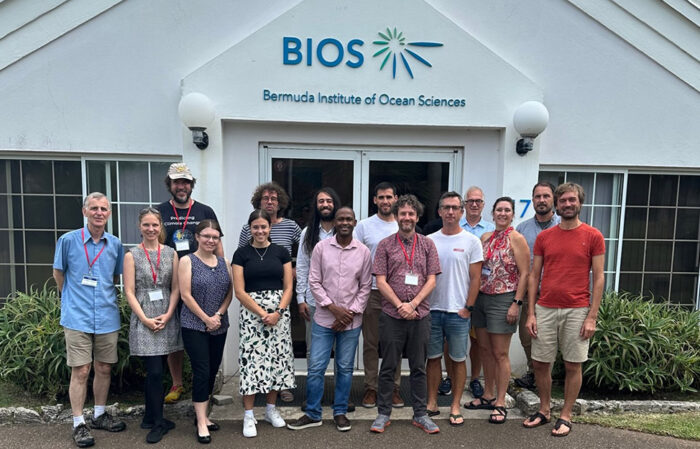Future Earth Networks Organize Workshop on Impacts of Increased Wildfires on the Ocean and Other Earth Systems

More than three dozen physical and social scientists, artists, communicators and others gathered at ASU BIOS (or joined online) in mid-September to share ideas and plan future efforts to improve the understanding of wildfires and their impacts on oceans and other global environments, including society.
Covering a range of topics designed to trigger the creation and continued engagement of an integrated wildfire science community, “FLARE: Fire science Learning AcRoss the Earth system” attracted an international group with varied expertise – from ecologists, chemists and statistical modelers to social scientists, ground-based firefighting organizations and artists.
“From an ocean perspective, it was key to include oceanographers in this discussion as fire has been shown to contain a cocktail of the needed nutrients to stimulate phytoplankton growth. To fully understand how the carbon cycle will respond to changing fire regimes, a full Earth system approach is needed,” said Dr. Douglas Hamilton, an Earth System Modeler at North Carolina State University and workshop organizer. “It was said time and again by participants that BIOS was the perfect location to hold the workshop. It stimulated wonderful collaboration and discussion.”
Organized by Future Earth Global Research Network Surface Ocean-Lower Atmosphere Study (SOLAS) and supported by the European Space Agency-Future Earth Joint Program, PAGES, and BIOS the three-day forum came as wildfires are increasing in number and severity around the world. “Even the Arctic, previously all but immune, faces rising wildfire risk,” notes the United Nations Environment Programme, which published research last year projecting that climate change and altered land-use patterns will fuel global wildfire increases of up to 14 percent by 2030, 30 percent by the end of 2050 and 50 percent by the end of the century. Already, according to the World Resources Institute, “forest fires are becoming more widespread, burning nearly twice as much tree cover today as they did 20 years ago.”
Among topics covered during the FLARE workshop were natural versus anthropogenic fire, how natural fire activity is changing due to human activities, and the carbon cycle and emissions. Regarding the ocean, workshop materials noted that “recent evidence suggests that wildfire-induced nutrient redistribution impacts marine ecosystems by fertilizing phytoplankton in nutrient-depleted waters” and recent wildfire trends “suggest that nutrients supplied to the oceans from wildfires will become a critical player in marine productivity in the coming decades.”
Hamilton said workshop participants identified three unifying challenges, including:
- Characterizing extreme event properties and impacts for society and science;
- Taking a holistic approach in understanding fire science, including how they modulate the carbon cycle; and
- Increasing interaction between the physical and social sciences with a goal of being more proactive in research outcomes.
In terms of an overarching goal, organizers of the workshop called for developing “a roadmap for coordinated wildfire research for the next five to 10 years,” noting that “future impacts of fires on the Earth system remain poorly constrained due to a lack of communication between relevant fields of expertise.” The newly convened community’s next steps include developing a white paper on the identified challenges and how to address them, Hamilton said.
This blog post was first published on the BIOS website.
Credit to Bermuda Institute of Ocean Sciences
DATE
November 7, 2023AUTHOR
Future Earth Staff MemberSHARE WITH YOUR NETWORK
RELATED POSTS
Future Earth Members Join UN Ocean Conference in Barcelona
Reflections from the Fire Science Learning AcRoss the Earth System (FLARE) Workshop
SOLAS Researchers Publish Special Feature on Air-Sea Interface in Changing Climate